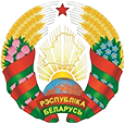Exhibition to celebrate Day of People's Unity opens in Minsk
The exhibition for the Day of People's Unity has opened in the administrative building in the center of Minsk, BelTA has learned .
The opening ceremony was attended by Head of the Belarus President Administration Igor Sergeyenko, Director of the National History Museum Aleksandr Khramoi, Belarusian President's Spiritual Revival award laureate Vladimir Likhodedov and the staff of the Belarus President Administration.
"1939 is the joy of reunification. The exhibition mentally takes us back to those events before the war," Igor Sergeyenko said.
Were it not for the reunification, the Nazi troops could have advanced as far as Minsk in 1939, and the events of the Great Patriotic War would have unfolded very differently.
"You must know your history. And I see that the interest in our history has been growing in recent years, and not only among young people," Igor Sergeyenko noted.
He stated that following the Riga Peace Treaty of 1921, the Belarusian people remained divided for 18 years. In fact, part of the country was under Polish occupation and experienced the oppression of Belarusian culture, with Belarusian schools being closed down, Polonization and infringement of the rights of Orthodox believers. The economy of the region practically came to a standstill. The provisions of the Treaty of Riga, which provided for the rights of national minorities, were regularly violated by Poland.
But the Belarusian people did not submit and fought for their rights. In those years, various newspapers were published on the Belarusian lands annexed to Poland, which told the truth about the life of Belarusians.
A certain catalyst for the process of reunification was the outbreak of World War II. "September 1939 was a joyful time. Nothing foretold Great Patriotic War. People in those regions happily welcomed liberators. For the two pre-war years, Belarusian schools, museums were opened; industries started working. Western Belarus got a strong impetus for development,” Igor Sergeyenko said.
This year, sovereign Belarus will celebrate this holiday for the third time. But an interesting point is that its history dates back to the pre-war years. Although not under the current name, the holiday was solemnly celebrated in Belarus on 17 September 1940 as the day of liberation of the working people of Western Belarus from the Polish oppression. I was also on the holiday calendar for 1941, but never celebrated because of the war.
"In the post-war period, according to reports, the holiday was celebrated in 1949. The new historical realities of the post-war period, the formation of the Polish People's Republic, the establishment of contacts with this country... Gradually, the holiday went away so as not to strain the relations. Nevertheless, the memory of 17 September has been preserved in the names of streets and agricultural enterprises. To a greater extent, in the part of Belarus that was under the Polish occupation," Igor Sergeyenko said.
“The Day of People's Unity is one of the main public holidays for me,” Vladimir Likhodedov told journalists. "Peace is the most important thing. No matter what they say but it is thanks to our president that we have peace here. Thanks to his policy. I support this. War is scary," he said.
The exposition features the posters, photographs and newspapers that tell about the events of September - November 1939: the liberation campaign of the Red Army in Western Belarus, the formation of Soviet government in the liberated territory and the legislative consolidation of the reunification of Western Belarus with the Byelorussian SSR. The exhibition also reflects the information about famous public and political figures of that time: Sergei Pritytsky, Aleksandr Chervyakov, Panteleimon Ponomarenko, Maksim Tank and others.
The project has been prepared with the assistance of the National History Museum of the Republic of Belarus and Vladimir Likhodedov, the Belarusian President's Spiritual Revival award, the author of the Fatherland project.
The exposition features the posters, photographs and newspapers that tell about the events of September - November 1939: the liberation campaign of the Red Army in Western Belarus, the formation of Soviet government in the liberated territory and the legislative consolidation of the reunification of Western Belarus with the Byelorussian SSR. The exhibition also reflects the information about famous public and political figures of that time: Sergei Pritytsky, Aleksandr Chervyakov, Panteleimon Ponomarenko, Maksim Tank and others.
The project has been prepared with the assistance of the National History Museum of the Republic of Belarus and Vladimir Likhodedov, the Belarusian President's Spiritual Revival award, the author of the Fatherland project.


















